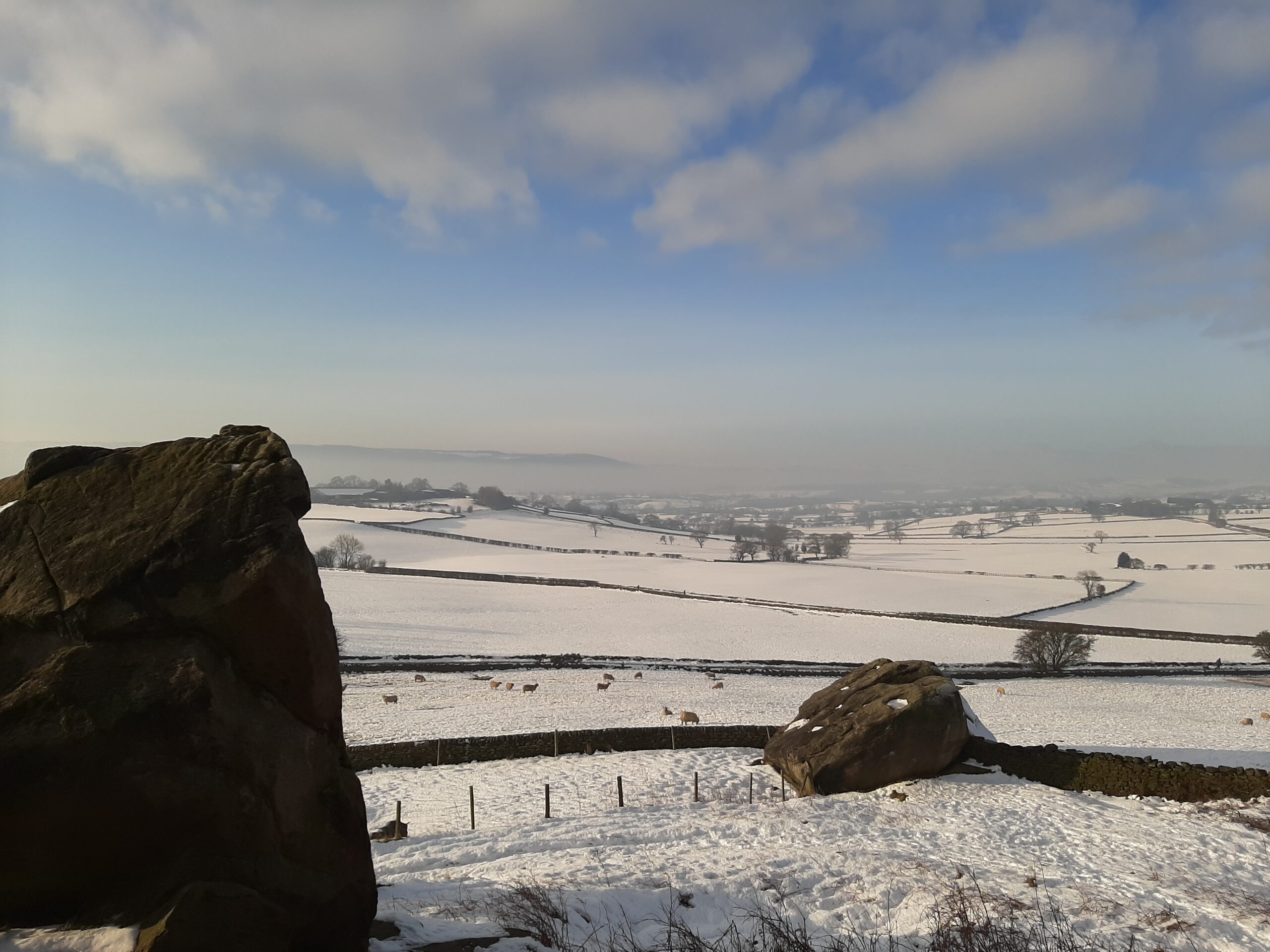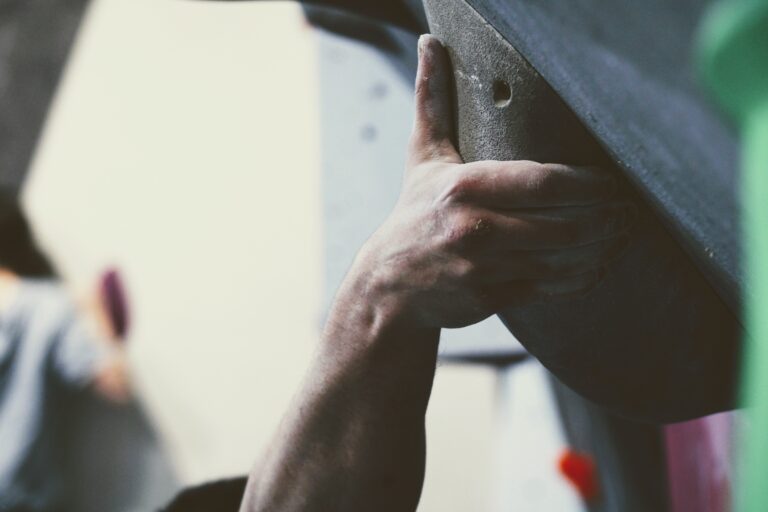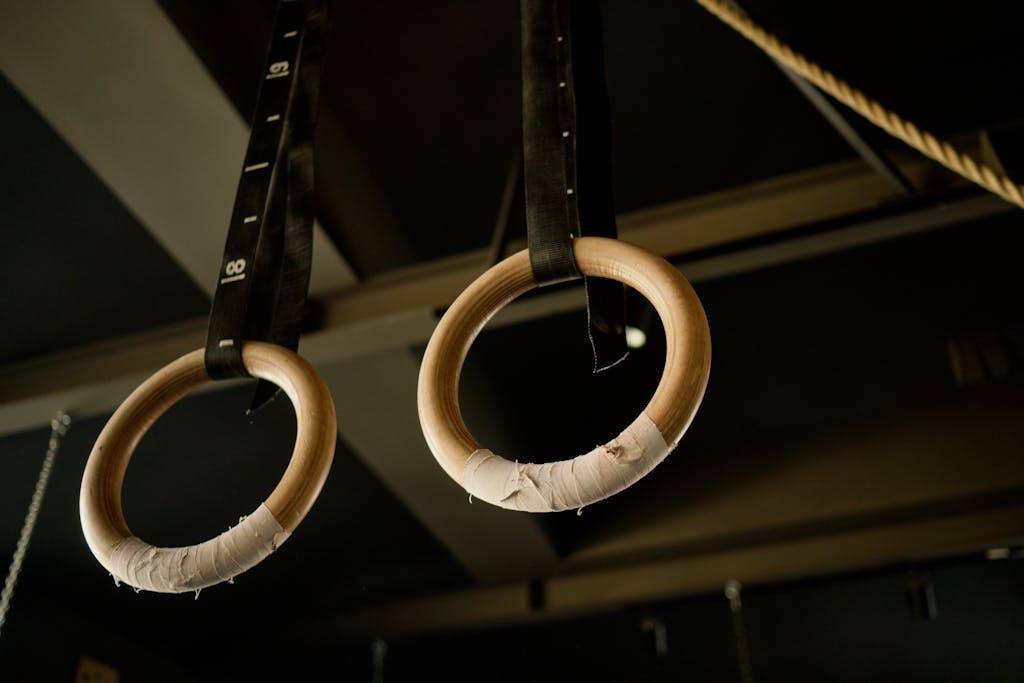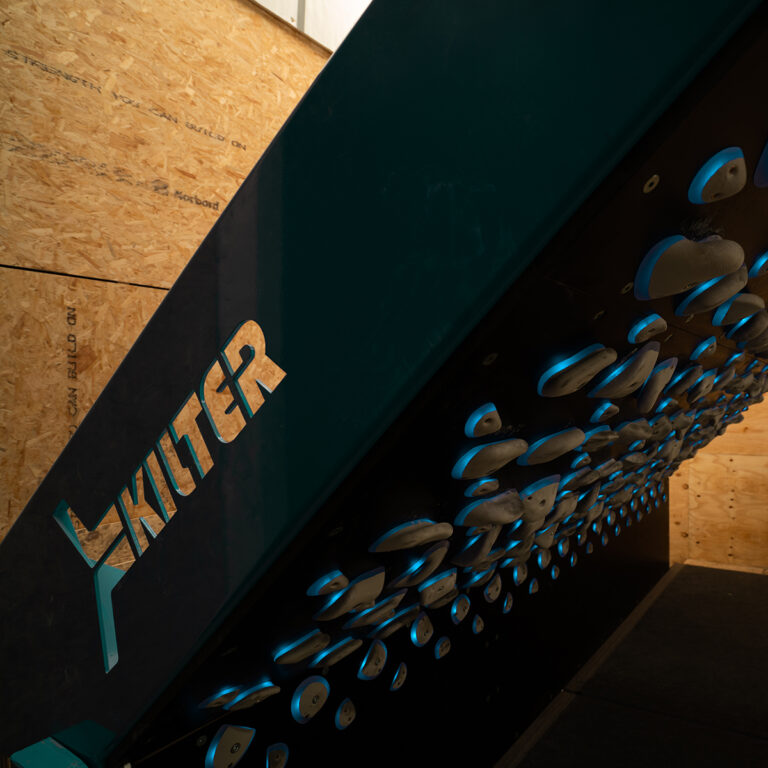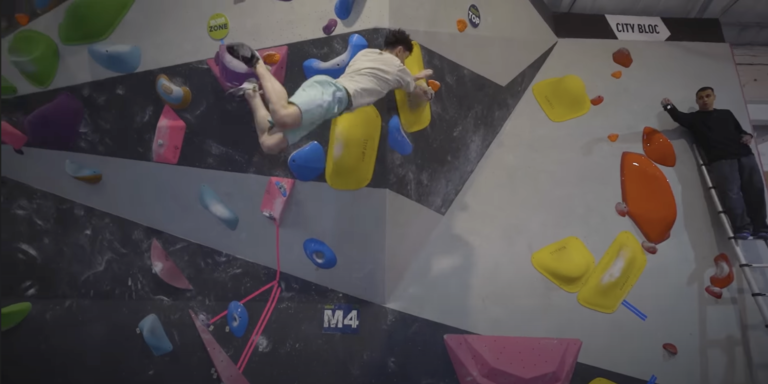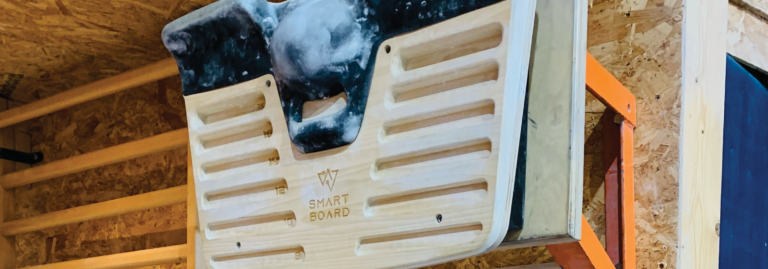From Cold Holds to Strong Gains: Winter Training Tips from Climbing Personal Trainer Alfie Wyman

For many climbers, winter can be a challenging time to summon the motivation to train. However, for others, it offers the perfect opportunity to dive into outdoor climbing adventures and reassess our training strategies to maximize gains. In this blog, we’re joined by CityBloc resident and climbing personal trainer at Begin Again Training, Alfie Wyman. We had the chance to sit down with Alfie and discuss some insightful approaches to training during this season. Here’s what he had to say:.
“What’s one thing most climbers are doing wrong in their training but don’t realize?“
“I think a lot of climbers either do too much or too little in their training. It’s like, people decide to get serious and think, ‘Okay, how do I train?’ So they watch a video with Magnus Midtbø, Adam Ondra, or some other big pro climber who’s insanely strong and think, ‘I’ll just train like that, and I’ll get the same results.’ But then you’ve got someone who’s been climbing for six months, never done any finger training, never really been in a gym, suddenly trying to follow these advanced routines. They don’t get the results they want, they’re miserable, they’re achy all the time, and their climbing actually gets worse because they’re just too tired.
The problem is, they haven’t thought about where they’re at—their level of fitness, what their body can handle. And it’s not surprising. Most of us got into climbing because normal sports didn’t suit us. Let’s be honest, for a lot of people, traditional sports kind of suck. There’s a big overlap between climbing and neurodivergence—it’s this solo, creative activity, and that’s what draws people in. But because of that, we tend to do our own research, and there’s so much information out there. Most of it skews towards elite climbers, because they’re the most interesting to watch, so people end up doing way too much training.
On the flip side, you’ve got people doing too little. They go into the gym, do a couple of pull-ups—maybe three—when they could probably do ten if they really tried. But three pull-ups, when you can actually do ten, just isn’t enough to send the message to your body to get stronger.90d5ff
So, you’ve got one group of people who are super keen, training way too much, and they probably need to scale back. And then you’ve got another group who don’t really understand what it means to push themselves and go hard. For new climbers especially, knowing how to balance effort and intensity is key to actually getting stronger. It’s not something most people realize when they’re starting out.”
“How do you balance pushing limits with preventing injuries? Are there red flags climbers should watch for?“
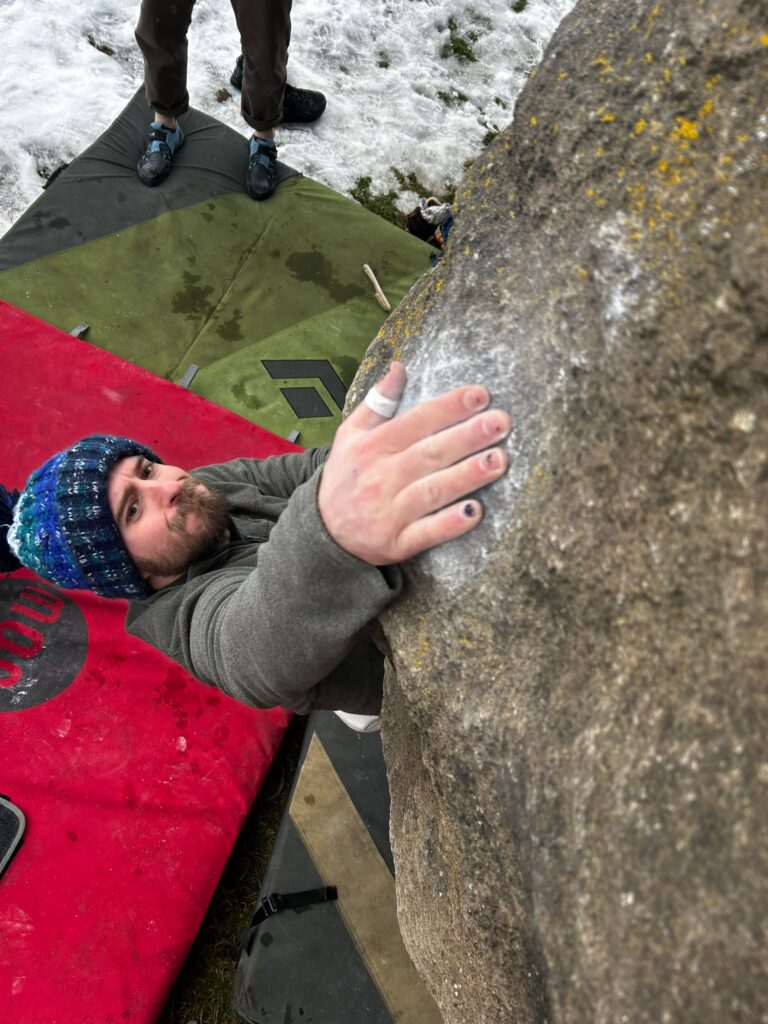
“I’ve got a few thoughts on this. Variation in climbing is super important. A good example is from when I first started climbing—I think a lot of people can relate to this. You get really keen on a project and try it over and over in one session. Maybe it’s a left-hand Gaston move, and you keep pulling on it, getting to the same spot, and it’s just not happening. You try again and again, and by the end of the session, your left shoulder is absolutely wrecked. That’s a clear sign that repeating the same move again and again can lead to irritation. If you’re obsessed with one style of climbing—like I love steep, fingery routes—and you keep doing it day after day without changing things up, it’s hard to recover. You’re just pushing the same button repeatedly. Someone once gave me a great analogy: if you tap your knuckle with a hammer once, it’s not a big deal—it’s just a little irritation. But if you do it a thousand times, by the end, it’s going to be agony. Climbing can feel like that sometimes—little stresses adding up over time.
Pushing your limits is fun, but there are different ways to approach it. If you love board climbing or comp-style problems, go ahead and have a hard session, pulling hard, trying loads of bouncy moves, and pushing yourself. But then, maybe a few days later, go back and work on something else. If there’s a coordination move you found tricky, break it down into simpler components and practice those. You can even take it back to basics with quiet footwork drills or accuracy training. There’s the physical side of climbing, where you’re asking your body to get stronger, but there’s also the technical and tactical side, where you build skills in less intense sessions.
Ultimately, it comes down to listening to your body. How tired are you? How stressed do you feel? When was your last hard session, and how many have you had recently? If you can figure out when you’re not feeling great and go a bit easier on those days, that’s ideal. Climbing is demanding, but if you build some general, all-round strength, your body can handle the load better, and it’ll be harder to push yourself to the breaking point. And if you do pick up a little niggle—not necessarily an injury, but just an irritation—it can feel awful because you can’t climb how you want. But that’s an opportunity to focus on other aspects of your climbing or even try new styles. When you come back to your favourite style, you’ll often find you’re better at it, and you might discover you actually enjoy those other styles too.
As for red flags, they’re different for everyone, but one big one is if you’re constantly tired and grumpy, and your climbing performance has dipped over a few sessions. That’s usually a sign your body isn’t recovering properly, and you’re close to something going wrong. Try to pay attention to what your body is telling you—it’s usually pretty good at giving signals if you listen.”
“If you could design the ideal weekly training schedule for a climber, what would it look like?“
“Annoying answer, but it depends. Everyone’s different. But let’s take an example: someone who loves climbing, wants to get better, and is willing to follow a plan. Not everyone’s like that, but we’ll go with it. For this person, I’d say they should train their fingers once a week in a controlled, measurable, and safe way. Something simple like finger lifts or finger boarding works well. For example, you could hang in a half-crimp position for 10 seconds, rest for a couple of minutes, and repeat that two more times. That’s specific, targeted training, but you want to make sure you’re fresh when you do it—rest a bit beforehand.
Then I’d add some board climbing into their week. It’s great for building body tension and working on technique, especially with a more basic, powerful style. On top of that, I’d get them doing technique drills at the start of their climbing sessions—things like quiet feet, sticky hands, or other exercises to improve footwork and accuracy. Start easy, focus on movement quality, and build from there. Some form of strength training is also really important. Big compound movements like deadlifts are great for body tension, back strength, and core stability, plus they teach you how to try hard. Pull-ups are a classic, too—basic but essential for shoulder health and overhanging climbing. I’d also add horizontal pulling, like rows, because climbing isn’t just about pulling straight down like a pull-up. On overhangs, you’re often pulling at angles, so training both vertical and horizontal pulling makes you stronger overall.
And don’t forget some pushing movements. Not so much for the old ‘antagonist training’ idea, which was kind of overhyped as a silver bullet for injury prevention, but because pushing is actually useful in climbing. On vert or slab climbs, or even on overhangs, you often use pushing movements—like when a trailing shoulder pushes to maintain tension on a hold. Bench presses, push-ups, or similar exercises can help build that all-around strength. All of this can be done once a week and still be effective if you’re trying hard. For drills, do them every time you climb. If flexibility or stretching is something they enjoy, they can do it as much as they like—daily if they’re into it. If they hate it, I’d say 10 minutes, twice a week, is a good start. It’s about finding balance and making the plan work for them.”
“What’s the most underrated exercise or method for building finger strength outside of climbing?“
“The basics are honestly the most underrated. People try to get fancy and reinvent the wheel, but simple exercises like fingerboarding and finger lifts are incredibly effective and still really valuable. There are other exercises out there, like finger curls, which could be useful, but they’re a bit more specific to training the range of motion in your fingers, similar to how you’d train other muscles like your biceps. But your foundational stuff—finger lifts and fingerboarding—are always going to be key.
Now, the more novel approach that’s worth mentioning is everyday fingerboarding. It’s not for everyone, but it’s a recent trend where climbers will do super light fingerboard training twice a day. We’re talking about 10-second hangs at 40% of your body weight with different grips, and you do, like, five sets per grip. The key here is that it’s all light, no fatigue, no pump, just light loads over time.
I wouldn’t say it’s going to be a game changer in terms of raw strength, but what I’ve found, both for myself and others, is that it helps with finger coordination, especially on smaller crimps. You just don’t feel as uncomfortable or sketchy on them, and your fingers feel more robust and less likely to tweak. And when your fingers aren’t feeling fragile, you can pull harder and train more effectively.
It’s definitely not for everyone, but I think it’s worth trying. Just make sure you’re keeping the loads light, listen to your body, and don’t overdo it. Plus, it’s kind of meditative—grab a cup of tea, listen to a podcast, and do a few easy lifts to start or end your day.”
“How important is rest and recovery in a climber’s progress, and how do you know when it’s time to take a proper break?“
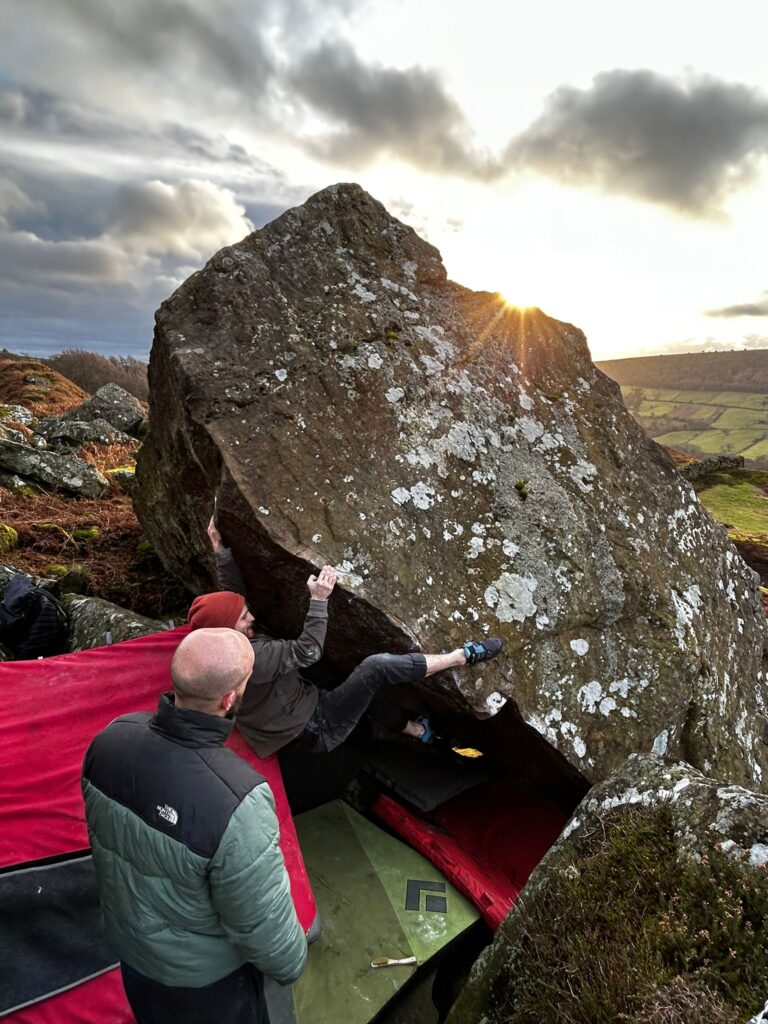
“Rest and recovery are hugely important. Honestly, they’re just as crucial as the climbing itself. It’s something you usually have to figure out for yourself—most people overdo it at some point and realize they’re not improving. But if you can skip that step and just take it on board, that’s even better. I’ve definitely been there, climbing five, six, even seven days a week, wondering why I wasn’t getting any better. The problem is, when you’re that tired, your body hasn’t had a chance to catch up. You’re throwing more and more stress at it, but it can’t adapt because it’s still trying to recover from the last session. Taking rest days—whether that’s a bath, a walk, or just stepping away from climbing—can be just as important as the training itself.
Think about top athletes in other sports like strength training or bodybuilding. Their recovery time is just as intentional as their training. They’re eating well, avoiding alcohol, sleeping properly, and staying relaxed because they know that’s how you actually make gains. If you’re feeling tired every session and not improving, that’s a clear sign something’s off. A lot of climbers are so psyched they’ll climb four or five days a week, which is great, but sometimes pulling back a little can actually make those sessions better. You’ll enjoy them more because you’ll have the energy to perform, not just grind through them feeling sore and exhausted.
And don’t forget skin. If you’re training hard—especially in, like, the comp room—you’ll trash your skin. I’ll do one session like that and need two days off just for my skin to recover. If you’re climbing six days a week, there’s no time for it to heal, and that’s going to hold you back. The mental side is huge, too. Climbing is a skill sport, and if you’re so tired you can’t think straight, you’re not going to analyse why you’re falling. Was it a bad foot placement? Did the hold feel off? When you’re rested, you can break down those things and get more out of your sessions.
So how do you know when it’s time to take a proper break? Look out for things like a drop in mood, low energy, or if your performance is consistently worse over multiple sessions. That’s your body telling you it’s not adapting anymore—it’s just running on empty. That’s when you need to step back, take it easy, and let yourself recover. Go have a bath, relax, and reset.”
“Winter is peak season for many climbers, but it’s also when people struggle with motivation. How do you recommend staying psyched?“
“Yeah, this one’s tough because it’s so individual. Everyone handles winter differently, and I’ve got my own experience with it, but I’ve also worked with people who’ve struggled too. So I’ll give a few examples. Winter is gritstone season. I love climbing on gritstone—it’s just so good when it’s cold. So my climbing naturally shifts towards that in winter, and I get psyched because I’ve got a reason to be out there. And I think that’s the key: having a reason, a purpose, something that makes it meaningful.
If you’re feeling unmotivated, it’s worth having a bit of a chat with yourself. Like, climbing clearly means something to you, or you wouldn’t even be asking this. So what is it that makes it meaningful? For me, it’s about growing, getting better, figuring things out. Outdoors is where I feel that the strongest—it’s bewildering. You’ll be projecting a 7b and starting to piece it together, but then you’ll jump on a 5+ and it’s completely impossible, and you’re like, ‘What’s going on here?’ That keeps me excited.
If you’re struggling to get to the wall, maybe take some time to remind yourself why you enjoy climbing in the first place. Once you’ve got that clear in your head, it’s easier to set goals or find value in the process. If it’s more about the social side for you, that’s another angle. Maybe try spending time with your climbing friends outside of climbing. That can reignite things too. It’s different for everyone, but ultimately, it’s about having that honest chat with yourself and figuring out what keeps you connected to climbing. Once you’ve got that, the motivation usually follows.”
“What’s your go-to advice for balancing indoor training with the occasional outdoor project in winter?“
“Lots of people have heard this before, but honestly, I hadn’t really thought about it until I had one of those ‘oh man, I should have thought about that’ moments. It’s really just about adjusting your indoor training to what’s useful.
I’ve developed a love for climbing on crimpy wooden holds on a board. It’s such a fun way of climbing—it feels really cool. But honestly, it means almost nothing for gritstone a lot of the time. Gritstone has those novel movements, slapping slopers, and gritting your teeth through the pain on coarse holds. So while that kind of training—the crimpy stuff on boards—is what I really like, it only has a bit of crossover, like with body tension and the occasional crimp outdoors. What I really need to train is slappy sloper climbing—maybe using a board with loads of slopers or just doing more climbs in the main gym on different terrain.
Balancing indoor training is about making sure you’re still enjoying it. If you’re miserable indoors because all you’re doing is training and not having fun, then what’s the point? You climb because you enjoy it, and your outdoor project is something you love. If you can make your indoor training fun and relatable to your outdoor goals, you get this double whammy of meaningfulness. If you think of your indoor training as a way to enjoy climbing even more overall, I think that’s going to be really motivating to most people.”
“How do you approach the mental side of climbing? Can physical training help climbers feel more confident or manage fear?“
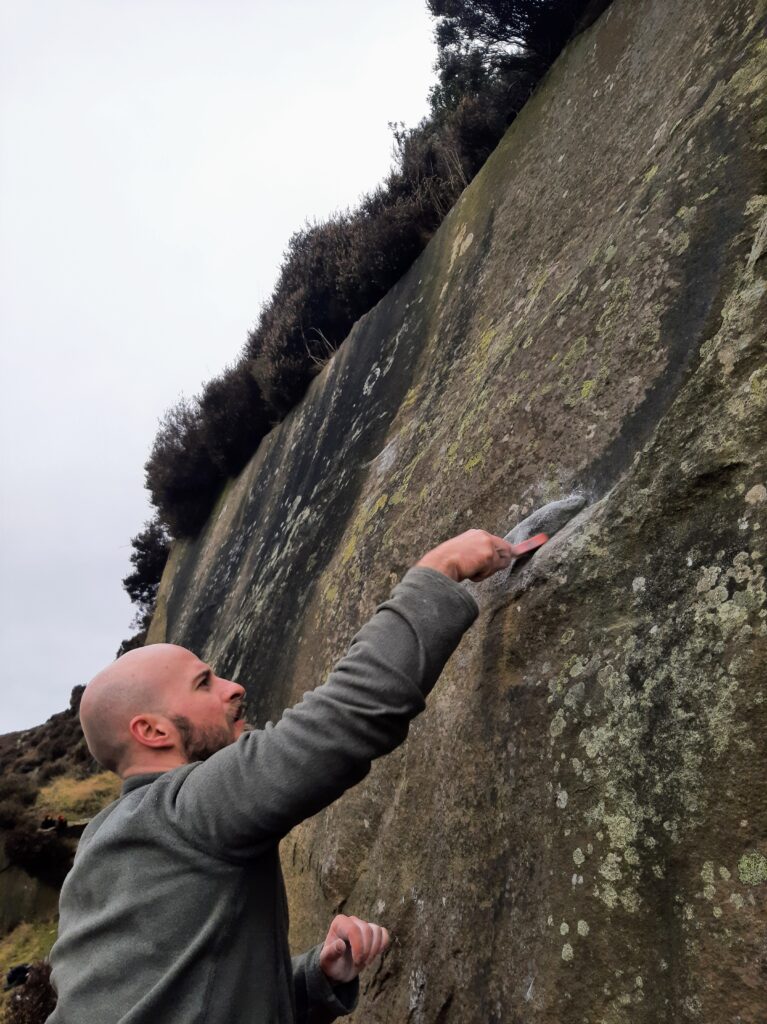
“So I think it’s kind of a self-determinism thing, where in the gym, you prove to yourself that you can do something you didn’t think you could, and that gives you confidence and the knowledge that you can grow and do better. That’s one side of it.
But I think there’s an even less abstract way to look at it. Like, if someone is afraid of falling. I’ve had this with a few different people, actually. One guy kept falling off the wall and rolling his ankles, and another lady just couldn’t jump down from a bouldering wall because her legs would give out. For the lady, it was a really basic example—she just wasn’t very strong. So in the gym, we got her to do some squats, building her confidence in her body. And once she could squat some weight, we went back to the wall and practiced jumping down. She stopped crumbling when she landed, and that gave her the confidence to try more dynamic moves. Down the line, hopefully, she’ll feel confident falling and know her body isn’t going to fail her.
So yeah, physical training can really help climbers feel more confident. Managing fear is harder, but it’s still tied to that self-determinism thing—being nervous about a weight and then doing it. It’s a way to explore your mindset in a controlled space. If you’re nervous or doubting yourself, you can practice setting that aside and just trying. It doesn’t always transfer perfectly, but being strong helps. If your fingers and shoulders are solid and you’re doing a highball that’s well above your limit, you’ll feel much more confident and less scared because you know you’re strong enough to handle it. That makes a big difference.”
“If you could give one piece of advice to climbers trying to break through a plateau, what would it be?“
“So, I’ll try to give a more in-depth answer to this, because the basic advice people usually give really gets under my skin. I’ve asked this question before, and someone told me, ‘You just need to climb more.’ Every time I hear that, I just want to slap some sense into them, because it’s not helpful at all.
When you’re plateauing, it usually means that the stimulus you’re giving your body is no longer enough to make change. You’ve been progressing, but eventually, things don’t impact you as much. If you’re in the best possible position—say, you’ve been climbing for a couple of years, worked on your technique, done drills, but you’ve never touched a weight or a fingerboard—then you’re in a perfect spot to push through that plateau. You’re ready to add some strength training into the mix and blast through.
Now, take a step back and evaluate what you’re doing. If you’re a slab climber and you love slabs, you’re probably already pretty good at them. But to get better, you might need stronger legs. Maybe you’re struggling with a pistol squat or small holds, especially on gritstone or those new, tricky indoor holds. So, building leg or finger strength will help on those types of climbs.
If you mostly stick to one type of climbing and aren’t doing much else, then maybe it’s time to change things up. For example, if you’re super strong but feel like a fish out of water on slabs, just spend 15-20 minutes at the start of your session doing some slab climbing. It won’t mess with your normal climbing, but over time, you’ll see improvement. If you’re climbing three days a week, that’s 45-60 minutes of focused practice on something you’re weak at. And over time, you’ll get a whole lot better at it.”
“What’s your favourite off-the-wall exercise and why?“
“I’ve got a few answers for this, and they’re all pretty basic exercises. For me, the one exercise that really does it for me is tuck lever lowers. If you’ve ever seen a front lever, now imagine a super-easy version where you don’t fully extend your legs. You just sort of have you knees to your chest, then slowly lower yourself from that position. Jump back up and lower again. Tuck lever lowers really targets my lats, and it’s been incredibly helpful for me, especially when it comes to holding on and cutting loose from the wall—getting my feet off while climbing.
Another one that I really like is finger lifts. It’s such a simple exercise, but there’s something really satisfying about adding weight to it. I love the sound of the weight clanging when you drop it to the floor—it just feels like a little victory. And the great thing is, it’s pretty accessible and cheap. You can get a decent setup for £60 to £100, and then you’ve got a really effective piece of equipment right at home, not taking up much space at all.
The last one, which is a bit less obvious, is visualization. It’s a bit more mental, but I find it crucial. If I’m really psyched about a climb, especially outdoors, I’ll run through the movements in my head when I’m at home. I think about how each move feels, how the holds feel, where I’m placing my feet, and how hard I’m pushing. There’s actually research showing that this mental training can help with strength. Not a lot of climbers do it, especially if they’re not naturally visual. But I think it’s a really potent off-the-wall exercise that can actually make a big difference.”
“Do you have a climbing hero or inspiration, and how has their approach shaped your own training philosophy?“
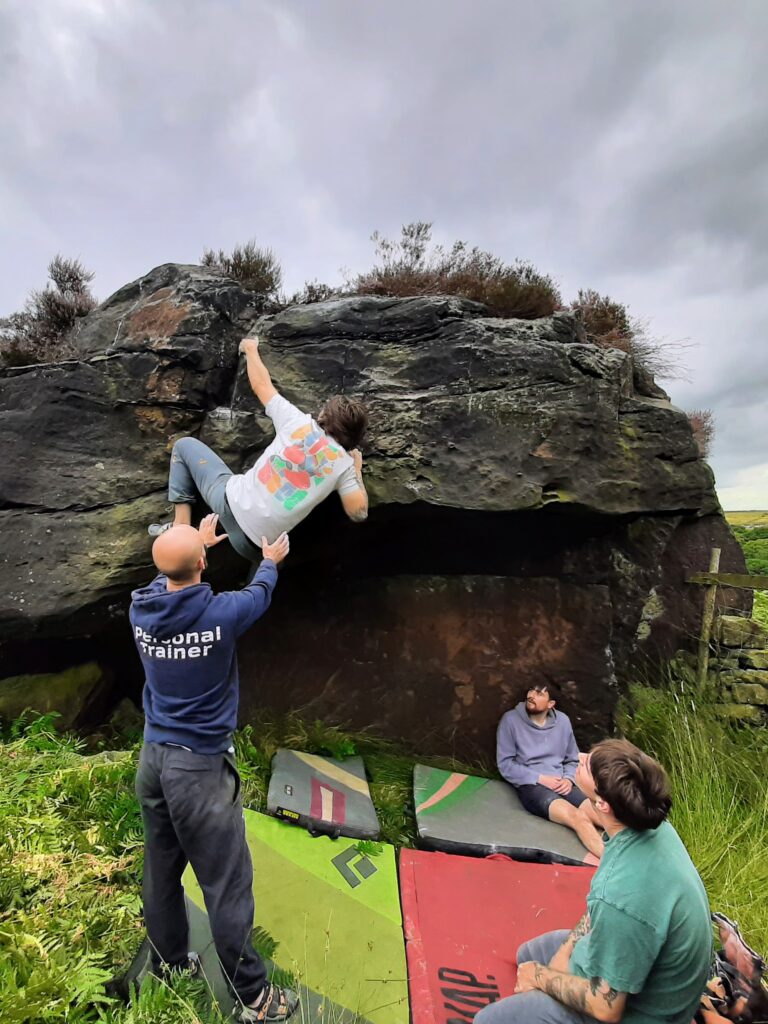
“Dave Macleod, definitely. He’s had a massive influence on me. I mean, he’s kind of like the Bob Ross of climbing—just really calming, and you can listen to him talk about injuries and nutrition for hours. Even though his nutrition advice can be a bit out there, I just find his whole vibe really relatable. He describes himself as a naturally weak climber and not very confident, and I really connect with that. I don’t know how true it is that he was naturally weak, considering he was crushing 7c pretty quickly, but I definitely relate to the idea of having to work hard to get to a point where I feel like I’ve reached a mediocre level of strength.
For me, it’s always been about being smart with my feet. I can’t just pull super hard like some people can, so I’ve had to become good at problem-solving and really focus on using my feet. It’s the effort and the problem-solving that work for me.
But more importantly, his book on injuries completely changed the way I approach climbing. I used to do these ridiculous cycles of climbing for a couple of months, then taking four months off. So I’d make a bit of progress, then lose everything. It was like I was constantly stuck at the same level. After reading his book, I started looking at injuries in a much more critical way, and it’s made a huge difference. I’ve gone from struggling with 6b to regularly climbing 7b+ over the years, and that shift has been huge for me. His approach has been incredibly important in how I train and how I’ve progressed.”
“What’s the best climbing advice you’ve ever received?“
“The best advice I’ve ever gotten was delivered in a way I wouldn’t personally choose, but it definitely stuck with me. I was at the wall, climbing on the woody, and I went for the last move and fell off. This guy just casually goes, ‘Why’d you let go?’ And I was like, ‘Nah, I didn’t let go. I just fell off.’ But he was adamant, ‘Nah, it looked like you let go,’ and then he just walked off. I was a bit annoyed at first, like, ‘What does he know?’ But then I just pulled back on, made that last move, and held on for dear life. And it stuck. I was like, ‘Huh, fair enough.’
It was like my introduction to what trying hard really means. And that’s a huge part of climbing—learning to push yourself to the absolute limit, but not all the time. It’s about doing it in a measured way, knowing when you need to dig deep and really go for it. Learning to give everything in those moments was a crucial turning point in my climbing. If I hadn’t figured that out, there’s no way I would’ve progressed.
Now, I wouldn’t deliver it the same way. I’d probably ask more kindly, like, ‘Oh, why do you think you fell off there?’ But that moment was a massive shift in my mindset—it made me realise what real effort looks like.”
“What’s a climbing myth or trend that you think needs to die?“
“The myth that strength training makes you heavier and will make you climb worse really needs to die. There’s some nuance to it, sure—if you’re eating more and building a lot of muscle, you might put on weight. But if you’re not changing your diet and you just add strength training, what happens is you go through something called ‘recomp’. You’ll have a certain amount of fat mass, and then you add muscle. Your body will start using that fat to fuel muscle growth, which is going to make you stronger without necessarily making you heavier.
And yeah, there are some performance benefits to getting leaner, especially if you’re really focused on performance. But overall, strength training is not going to bulk you up and make you a tank on the wall—it’s going to make you better at climbing. I’ve seen it first-hand. If you get stronger quickly, you’ll notice you feel more secure on the wall, but you might also have a dip in your technique. That’s happened to me and some people I know. You get stronger, and suddenly you forget how to use your feet, because you’re relying on your upper body. But it’s definitely easier to relearn technique than to build strength from scratch.
The myth that strength training is bad for climbing has done a lot of damage. It’s kept people from training in ways that make them feel better and protect them from injury. Strength is a key part of the climbing process, not the enemy.”
“If you had to design the perfect climbing training session for someone who hates training, what would it look like?“
“This is a tricky one because I used to hate training too, until I saw how it actually helped me climb better. If someone hates training, the key is keeping it simple, getting maximum results from minimal effort, and making it enjoyable.
One way to do that is to train with someone you like being around. Have a go at a few exercises together without taking it too seriously—more like, “Can you do this?” and having a bit of fun with it. Keep it light and low-pressure, and just do it occasionally. It’s less about the perfect session and more about the right atmosphere. For a lot of people, especially women, gyms can feel intimidating because they’re so male-dominated. It’s easy to feel out of place or self-conscious. But having someone there who’s supportive, makes you feel welcome, and helps you ease in can make all the difference.
So, the perfect session for someone who hates training? Start with trying things they wouldn’t normally do, see what they enjoy, and just go from there. If they don’t like one thing, move on and keep it flexible.”
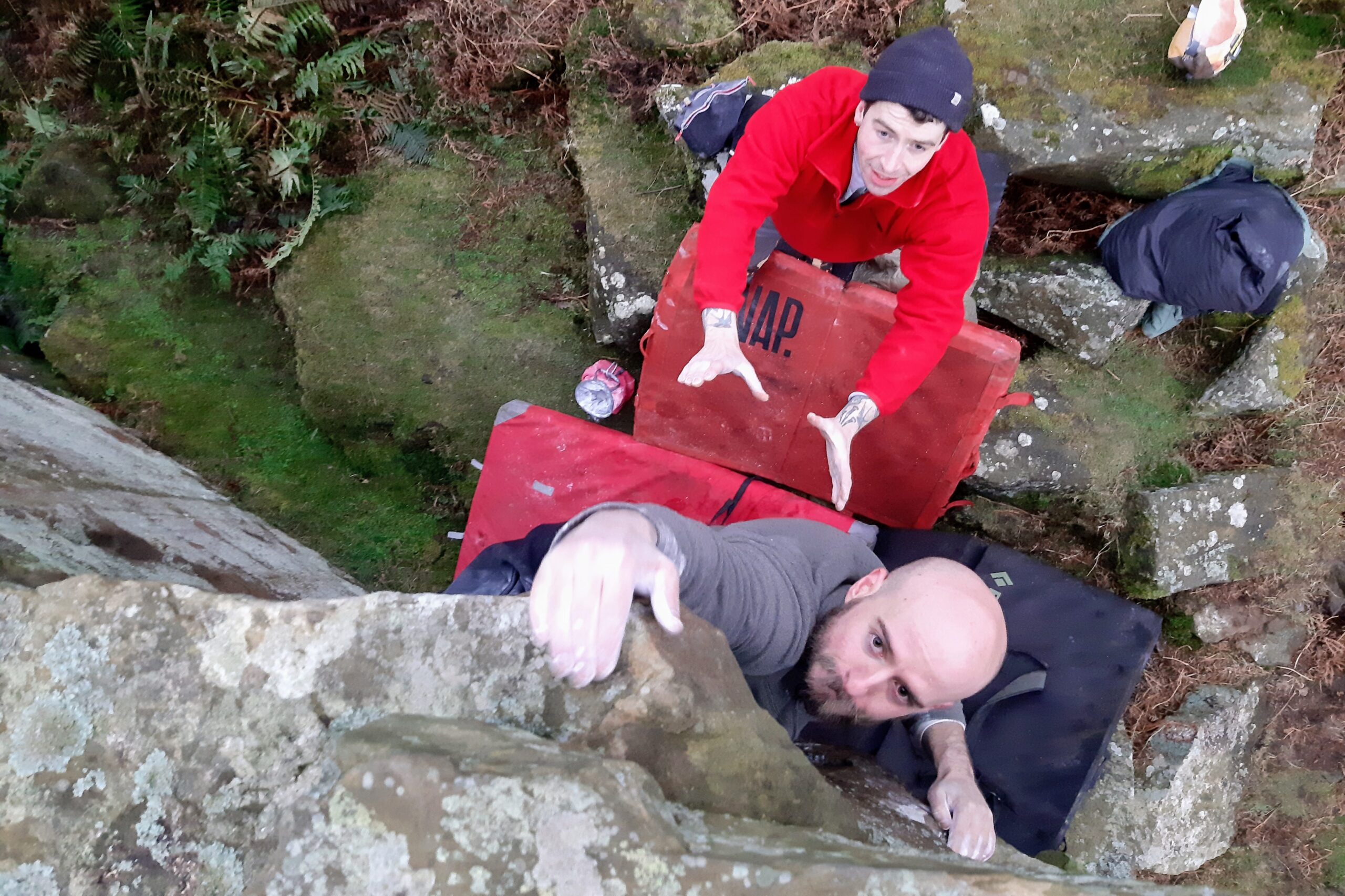
“If you could leave climbers with just one piece of advice to carry through their training and climbing journey, what would it be?“
“I’d say, think of climbing like a relationship. If you’re toxic in a relationship—like if you don’t communicate, build up resentment, or neglect the good stuff—it’s going to turn into something you hate. Climbing’s the same. When I lose motivation, it’s usually because I’ve forgotten why I love it or stopped paying attention to what it’s asking of me. For me, that means going back outdoors, projecting something cool, and being around people who make it fun. I love climbing on my own, but collaborating on a project with someone—swapping ideas and celebrating small wins—really keeps me grounded. That community side of climbing isn’t just fun; it’s crucial for my mental health.
It’s also important to be honest with yourself. If you’re using climbing as an escape, or you’re so intense about it that it stops being fun, that’s not a healthy relationship. Climbing should fit into your life in a way that makes sense—whether it’s something light and casual or deeply meaningful. Even if it’s serious for you, find ways to keep it playful. If you take it too seriously, you risk ruining the relationship altogether. So yeah, treat climbing with the same care and balance you’d give to any relationship that really matters.”
The Wrap up

As we wrap up this discussion with Alfie, it’s clear that winter doesn’t need to be a time of training burnout or stagnation for climbers. Instead, it can be a transformative period where we recalibrate our training approach and focus on building a strong foundation for the months ahead. Alfie’s insights offer a refreshing perspective on how to use this season strategically—not just for getting stronger, but for honing your technique, keeping your motivation high, and embracing the mental side of climbing. It’s about more than just pushing harder; it’s about training smarter and being intentional about the challenges we face, indoors and out.
For those ready to take the next step in their training and break through plateaus, Alfie is available for one-on-one sessions through Begin Again Training. His approach is built around personalized guidance, where you can address your unique needs and focus on what will make the most difference. To book a session with Alfie, simply head over to @beginagain.training on Instagram, send an email to [email protected], or catch him on a Friday behind our desk.
Keep crushing and enjoy this Winter.

